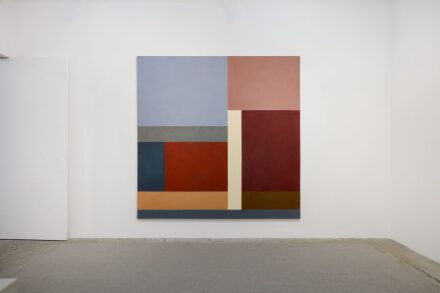
Mary Obering, Works from 1972 – 2003 (Installation View), via Bortolami
This month at Bortolami Gallery, the work of artist Mary Obering takes center stage. Surveying Obering’s prolific output from 1972 to 2003, the exhibition focuses on the artist’s singular approach to Minimalism and geometric abstraction, spanning both floors of the gallery, with the Upstairs dedicated to artworks from the 1970s, a nod to the artist’s SoHo studio in which she took residency in 1971.
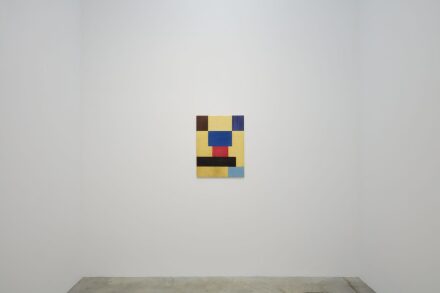
Mary Obering, Works from 1972 – 2003 (Installation View), via Bortolami
Obering began exploring minimalism in the early 1970’s, researching how the push beyond internal pictorial space could provide new prompts towards her own painterly language. Here, works from her Drop Series see cut strips of canvas tacked with finishing nails to the top edge of stretched monochrome canvases, their layering suggesting portals or entryways into landscapes of the artist’s own imagining. Applied in fluttering brushstrokes, the balanced palette of Through Snowy Mountains at Dawn (1973) reveals the artist’s fascination with Eastern art and philosophy, in particular Tang Dynasty poetry. Her Window Series, from this same typology, draw on a similar linkage between painting and architectural arrangements.
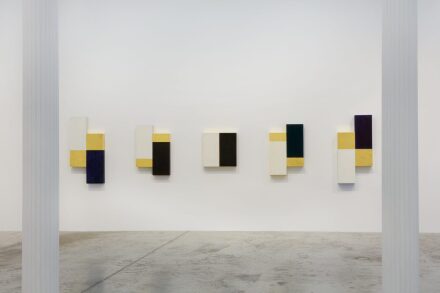
Mary Obering, Works from 1972 – 2003 (Installation View), via Bortolami
The show also presents a series of Masonite panels from the same era, showcasing her continued involvement with materials of construction and architecture while using them towards more poetic ends. The Arch Series elaborates on the Renaissance invention of painting as a window onto the world. In Dream Plane (1975), for instance, titanium white and a vibrant blue splice two equal curved panels, revealing a horizon line in this simple act, and a tension between what the artist thought of as pure abstraction and the compositional elements of landscape.
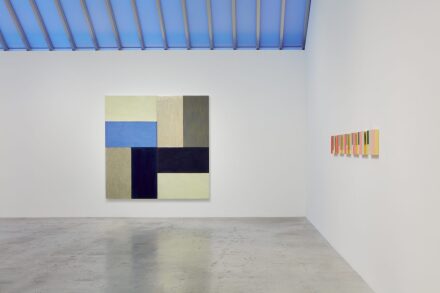
Mary Obering, Works from 1972 – 2003 (Installation View), via Bortolami
Also on view, Obering ‘s later work is represented in a series of jewel-like multi-panel works, Sail On (For Hyde) (1998), Story (1999), and KCB, BKC, CBK (2003), a series of rhythmic, undulating works that use oscillation and repetition of cascading shapes and tonal shifts across the works’ surfaces to create hypnotic, immersive visual effects. An earlier suggestion to push beyond the painting plane is re-visited through the activation of the spaces between the lushly painted panels: the walls themselves. Within the Hanging Series, tempera wraps around the edges and tops of object-like panels, calling to mind Obering’s 1970s invention of draped paintings.
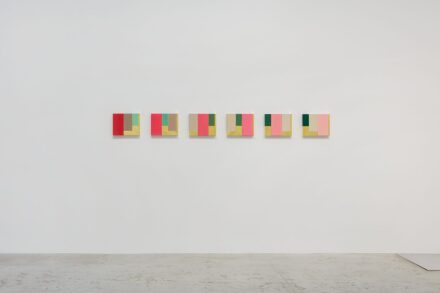
Mary Obering, Works from 1972 – 2003 (Installation View), via Bortolami
Using these varied spatial and material investigations, Obering’s work on view showcases an artist moving across, and returning to familiar forms, each time bringing new ideas and new iterations to her practice. The show closes February 26th.
– D. Creahan
Read more:
Mary Obering at Bortolami [Exhibition Site]



